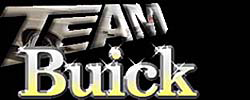
Buick at one time used straight numbers running from year-to-year to serialize their cars. But this example number would indicate a 1933 car, which is impossible. The number is too high to be an early Nailhead engine serial number.
Was the Wildcat II a fully operational vehicle? Quite a few of the dream cars were styling exercises and had no operable running gear.
This show car, due to its fiberglass body, wheelbase, length, and 2-passenger setup seems to draw heavily on the first Corvettes built around the same time. As you probably already know there were many fiberglass show cars from all GM brands entered in these mid-50s Motoramas that drew heavily from the original Corvette.
Websites abound that trace the initial development of the 1st Vette and its appearance at the 53 Motorama. Information dug up in one of these sites shows that cars were assigned shop order numbers when the GM design studio worked on them. One early 1954 Corvette styling project was assigned S.O. 2151. The 53 Corvette body type is shown as 2934 on the nameplate. This matches no other GM body style numbering sytem at the time. Had it gone into production, maybe the Wildcat II was going to be fiberglass body type 2667? Fully experimental cars which were to receive extensive road testing were assigned experimental car numbers beginning with XP (example XP-700).
Do you think its possible the Wildcat II was built up from a regular production Corvette? If the Wildcat II ran and drove, seems like the stylists and designers would have had an easier go of things by starting off with an operable production vehicle.
Other interesting items: The 300- 53 Corvettes were built in Flint, Mich. in an old Chevrolet customer delivery building. Although 1954 production was moved elsewhere, car #332 would have been a very early 54 model. This is lots of fanatasizing for sure, but maybe that's what is required to decode a dream car VIN?
What has been, can be again. (Bob Wills, 1942)





Bookmarks